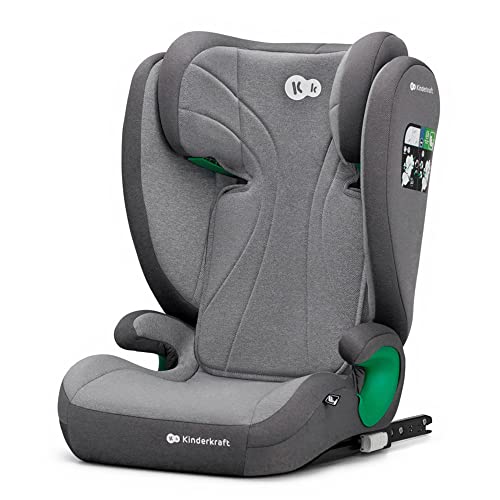Understanding Baby Prams and Pushchairs: A Comprehensive Guide
When it pertains to taking care of a newborn or a baby, couple of products are as vital as a trusted baby pram or pushchair. These movement help supply a safe, comfy way to carry babies while allowing moms and dads and caregivers the flexibility to navigate the world. This short article checks out the different aspects of baby prams and pushchairs, helping parents make informed choices about which product may be best fit for their household's needs.
What Are Baby Prams and Pushchairs?
Baby Prams: These are usually designed for babies and very young babies. They have fully reclining seats that permit a flat position, making them appropriate for newborns. Prams typically include a large, deep body, providing additional protection and convenience.
Pushchairs: Pushchairs, likewise referred to as strollers, are more flexible and can typically be adjusted for toddlers too. They are light-weight, easy to navigate, and often include a range of seating positions, consisting of reclined and upright.
| Function | Baby Prams | Pushchairs |
|---|---|---|
| Ideal Age | Newborn to around 6 months | Newborn to 3 years or more |
| Seat Position | Fully reclined | Adjustable (reclined and upright) |
| Weight | Much heavier, more robust | Lighter, more compact |
| Folding Mechanism | More intricate folding | Normally easier folding |
| Maneuverability | Can be less maneuverable | Highly maneuverable |
Secret Features to Consider
When selecting a baby pram or pushchair, prospective purchasers must consider a number of essential features that can affect the usability and convenience for both the child and the caregiver.
1. Safety Features
- Five-point Harness: Ensures the baby is securely strapped in.
- Brakes: Reliable braking systems avoid mishaps.
- Stability: A broad base and well-constructed frame enhance stability.
2. Convenience
- Cushioning: Ample padding on the seat makes sure convenience.
- Suspension System: Provides a smoother trip on unequal surfaces.
- Canopy: A large, adjustable canopy protects the baby from sun and rain.
3. Portability
- Weight: Lighter models are much easier to lift and bring.
- Folding Mechanism: Easy folding designs enable fast storage and transportation.
- Compact Size: A more compact size makes it much easier to fit into automobile boots and tight spaces.
4. Flexibility
- Convertible Options: Some models can be adjusted from a pram to a pushchair.
- Reversible Seat: Allows the baby to face the moms and dad or the world, depending on choice.
- Accessories: Look for options that can accommodate safety seat or have a storage basket.
5. Sturdiness
- Product Quality: Invest in higher-end materials for durability.
- Weather Resistance: Water-resistant fabrics ensure that the pram/pushchair can stand up to different weather conditions.
Types of Baby Prams and Pushchairs
Numerous types of baby prams and pushchairs meet different function requirements, aligning with moms and dads' specific way of lives.
1. Travel Systems
Travel systems usually integrate a safety seat and a stroller in one plan, allowing for smooth transportation from car to pram or pushchair without disturbing the baby.
2. Umbrella Strollers
Umbrella strollers are light-weight and convenient, created for easier maneuverability. They are perfect for quick trips and may lack some functions discovered in full-size strollers.
3. All-Terrain Pushchairs
These are ideal for active families who take pleasure in treking or taking strolls on rugged surfaces. They typically feature bigger wheels for stability.
4. Jogging Strollers
Jogging strollers are developed for parents who wish to integrate workout with childcare. They feature durable frames and fixed front wheels to improve security during a run.
The Importance of Choosing the Right Option
Choosing the proper baby pram or pushchair is not merely a matter of preference; it directly impacts the security and comfort of the baby. Furthermore, the best choice can profoundly influence the lifestyle of the caretakers.
Advantages:
- Convenience: A well-chosen pram or pushchair makes outings easier and more pleasurable.
- Health: Proper support helps in spinal and skeletal advancement in infants.
- Bonding: Outdoors play a crucial role in parent-child bonding.
Often Asked Questions (FAQs)
1. At what age can my baby utilize a pushchair?
The majority of pushchairs are developed to accommodate babies as young as 6 months, although some designs can be gotten used to safely transport newborns when used with suitable safety seat.
2. How do I maintain my baby pram or pushchair?
Regular cleansing is vital. Wipe down the frame and material with a wet cloth and mild soap. Regularly examine the wheels and brakes for wear and tear.
3. Can I use a baby pram for jogging?
Generally, no. Routine baby prams do not have the stability and design needed for running. It is much safer to utilize a stroller specifically developed for that purpose.
4. How do I select the right size?
Think about how frequently you will be utilizing the pram/pushchair and where. If space is limited, try to find a more compact design. For Pushchairs And Prams , choose one with larger wheels and excellent suspension.
Baby prams and pushchairs are invaluable tools for moms and dads and caregivers, allowing safe and comfortable transport of babies and young children. By understanding the different functions, types, and benefits involved, caretakers can select the best movement help matched to their requirements. Whether it be a sophisticated travel system or an easy umbrella stroller, the ideal purchase can considerably improve the experience of parenthood, making getaways enjoyable and hassle-free for both moms and dads and babies alike.

